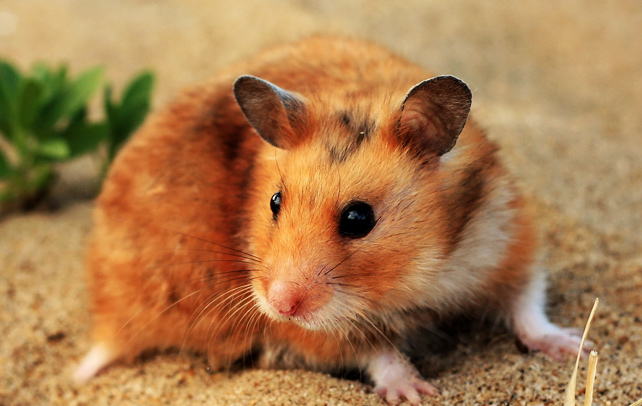Interesting Information About Hamsters

Hamster, the nocturnal rodent and one of the favourite pets in most of the countries, is seen as a fat-rich animal. Hamsters draw their origination from Syria and they were used for research purposes until 1948. In the year 1948, Albert Marsh, a highway engineer introduced them as good pets. They have fur-enriched flabby body, short tail, and cheek pouches with small round eyes. They are known to have strong legs and wider feet. Research reveals that dwarf hamster is the smallest hamster and common hamster is the largest hamster among all the species of hamsters. Hamsters are widespread in China, Korea, Siberia, Mongolia, India, and Syria. Further sections of this article will strive to give you an edge over others by enhancing your knowledge about hamsters. Have a look.
Fast Facts
Scientific Name: Mesocricetus auratus (Syrian Hamster)
Female Hamster Name: Sow
Male Hamster Name: Boar
Young Hamster Name: Pups
Kingdom: Animalia
Phylum: Chordata
Class: Mammalia
Order: Rodentia
Suborder: Myomorpha
Family: Cricitidae
Superfamily: Muroidea
Genera: Mesocricetus, Phodopus, Cricetus, Cricetulus, Allocricetulus, Cansumys and Tscherskia
Species: Cricetus cricetus,Mesocricetus auratus, Phodopus campbelli, Phodopus sungorus, Cricetulus griseus and Phodopus roborovskii
Diet: Omnivorous
Average Weight: Male 85-140gms / Female 95-120gms
Natural Habitat: Mostly dry areas
Life span: 1-3 years
Sexual Maturity: Male 6-8 weeks / Female 4 weeks
Gestation Period: 15-20 days
Teeth Colour: Yellow or White
Litter Size: 4-12 pups
Gestation Period: 16 days
Weaning Age: 3 weeks
Interesting Information About Hamster
- Male hamsters and female hamsters are known as ‘Bucks’ and ‘Does’ respectively, whereas baby hamsters are known as ‘puppies’.
- Out of 14 classes of the species of hamsters, eight of them are kept as pets at home.
- Hamsters have weak eyesight as they are capable of making vision of only 6 inches. Moreover, they are colour-blind.
- Since hamsters lack adequacy in their vision, it is the scent gland which helps them return to their home when roaming in unknown areas.
- Interestingly, they are known for not forgetting their relatives easily.
- Hamsters are good pets and they exhibit different reactions to varying names, if taught.
- In general, hamsters are sensitive to Cedar.
- The wild hamsters have burrows which are up to 2 meters deep.
- As there are different species of hamsters so is their body fur, which is found to be of many colours.
- Amazingly, it is the temperature which determines the sex of dwarf hamster babies. Keeping the mother hamster in warmer temperature results in male baby hamster. On the other hand, female baby hamster is born when the temperature is low.
- Usually, the time period of April to September is the breeding season for dwarf hamsters. However, if they are provided with adequate lighting and preserving conditions, the breeding can be seen throughout the year.
- Hamsters’ name is driven from German word ‘hamstern’ which means to store food.
- They utilise their nights in exploring food supplies and storing them in their burrows.
- Interestingly, a single burrow of hamster can accumulate as much as 38 pounds of grain.
- Hamsters are known to travel nearly 8 miles at night.
- Hamsters are born with the capability of lifting almost half of their body weight in their pouches.
- The wild hamsters are experts in digging tunnels. Many a times the depth of these tunnels is counted to be three feet deep.
- Hamsters are nocturnal as they remain active during the night time whereas spend the day time sleeping.
- However nocturnal, many hamsters have the capability of scheduling their day time between sleeping and waking.
- The golden hamsters (Syrians) have their origin in Middle East country of Syria, and the djungarian hamsters (Cambell’s Dwarfs) come from the steppes of Russia.
- The body odour of a hamster is almost unnoticeable.
- Hamsters were first demonstrated as pet animals in 1948 by a highway engineer Albert Marsh.
- The dwarf hamsters are the smallest hamster of all the breeds existing on the earth having size of 5 centimetres only.
- The diet changes are likely to be resisted by hamster’s body, so abrupt changes in its diet are a strict no-no.
- A hamster does not like to live in the vicinity of other hamsters.









